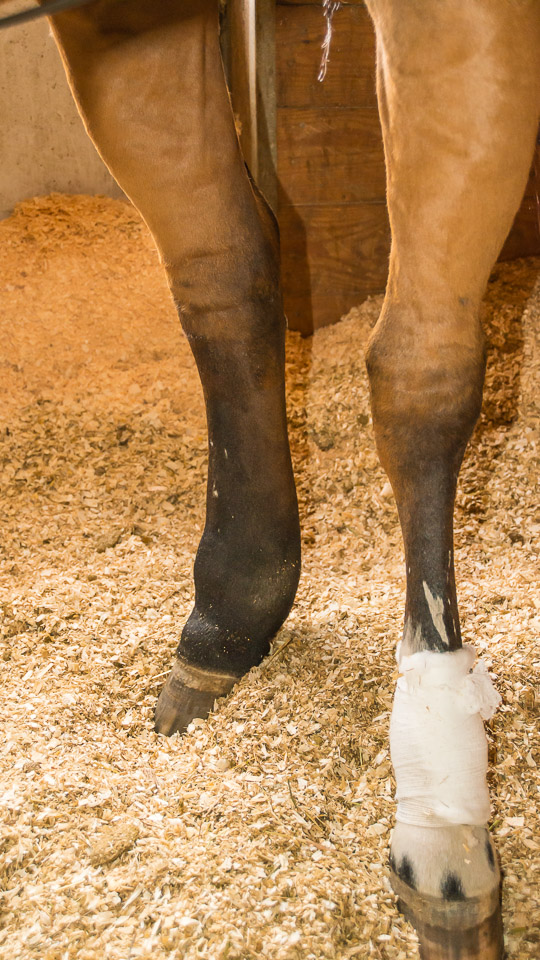
Circulatory System In Horses – Lymphangitis
The first sign of lymphangitis is a small localized swelling on the limb. It is often overlooked or regarded as a “bruising” caused by trauma. Within a day this swelling becomes larger with heat and pain as the infection takes hold. Soon the swelling runs from the hoof up to the stifle (or equivalent in the forelimb) with serum oozing through the skin forming small hard beads of dried serum.
**CONTINUED IN ARTICLE TAB**
Related material – Sometimes I have a lot of material here that I have written, podcasted, video blogs and other things. They will be listed in this tab.
Use the browser back button or menu to return to the index of topics.
⬇︎ CLICK ANY IMAGE BELOW TO REVEAL MORE INFORMATION ⬇︎
The first sign of lymphangitis is a small localized swelling on the limb. It is often overlooked or regarded as a “bruising” caused by trauma. Within a day this swelling becomes larger with heat and pain as the infection takes hold. Soon the swelling runs from the hoof up to the stifle (or equivalent in the forelimb) with serum oozing through the skin forming small hard beads of dried serum.
In reading any discussion on lymphangitis there are a few common points:
- The cause is an inability of the horse to mount an appropriate immune response against a bacteria or fungus within the leg.
- The infection and the aggressive immune response damages the lymphatics which are responsible for draining the fluids along with the debris within the limb.
- The blood continues to enter the limb and perfuse into the tissue under pressure but is then unable to leave causing intense swelling like an overfilled balloon with water. This stagnant blood is a breeding ground for the invading bacteria.
- There are several causal agents but Staphylococcus, Streptococcus and mixes of skin and environmental bacteria are common.
- It can and usually does become chronic with a lifetime of recurring painful swelling especially if the original insult is not aggressively treated.
I have always aggressively treated any lower leg injury AND any lower limb swelling even if there is no cut seen. This includes a pressure wrap applied and kept on when the horse is stabled to press back into the circulation any excess fluid. I also apply cold water therapy under pressure (cold water from a hose aka hydrotherapy. I keep the whole limb super clean using Betadine Scrub washing daily followed with a clean pressure wrap applied to the dried leg. Antibiotics work well only if there is no swelling because most antibiotics cannot penetrate edema.
Cleanliness, pressure wraps and exercise is critical in the early stages. Once the edema becomes hot and painful indicating a bacterial infection, the success of treatment becomes less effective. As time goes on and the lymphangitis recurs, the only solution is to pressure wrap, exercise and medical treatment as prescribed by your vet. This may be an antibiotic (hopefully cultured for an effective one), a systemic steroid or both.
Infections by rule cause the immune system to respond with a variety of weapons to fight the infection. With the COVID pandemic we have heard a lot about the immune system. As with COVID, the damage often occurs from an overactive response from the immune system. Other immune reactions that Arte bad are ones that attack the body’s own tissues, called an autoimmune reaction. I suspect that some of these horses with lymphangitis have another factor occurring that is triggered when the insult initially occurs. However, according to resources, there are no other conditions associated with these cases including a breed, age or gender. Sometimes it occurs in only one horse on a farm of many horses and sometimes several horses on a farm are affected. We just haven’t been able to (or there is no money for research in) discover the accurate pathogenesis of lymphangitis.
For those of you reading this who have a horse suffering from this disease or have lost their horse to it, my heart goes out to you and the horse. One of the moments that drove me to become a veterinarian is when a horse I was placed in charge of had lymphangitis of one hind limb. The skin and tissue was destroyed in the cannon area revealing the underlying tendons. The smell is present in my mind as I write this. She was euthanized.
The lesson here is to treat every leg swelling as if there is a cut that can become infected. Try also to reduce any systemic inflammation occurring through diet, environment and social changes – I write about this elsewhere.
- Additional tables
- Links to other in house articles
- Links to outside articles
- Reference material used in developing this topic.
There are no related articles here if you don’t see linked items.


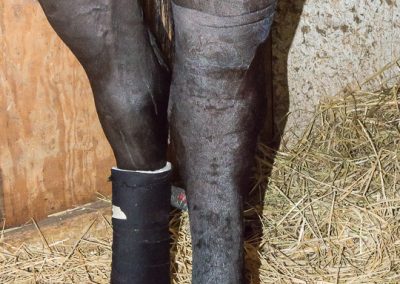
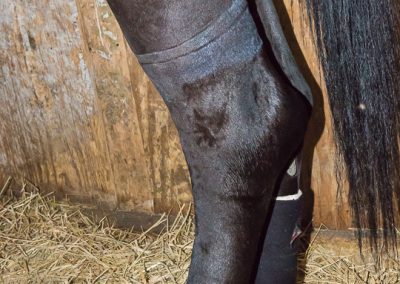
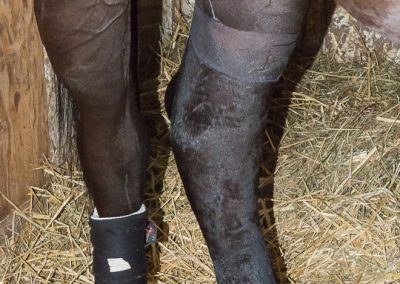
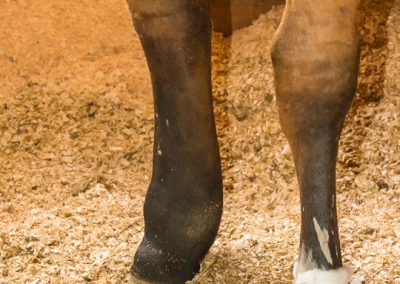


Responses